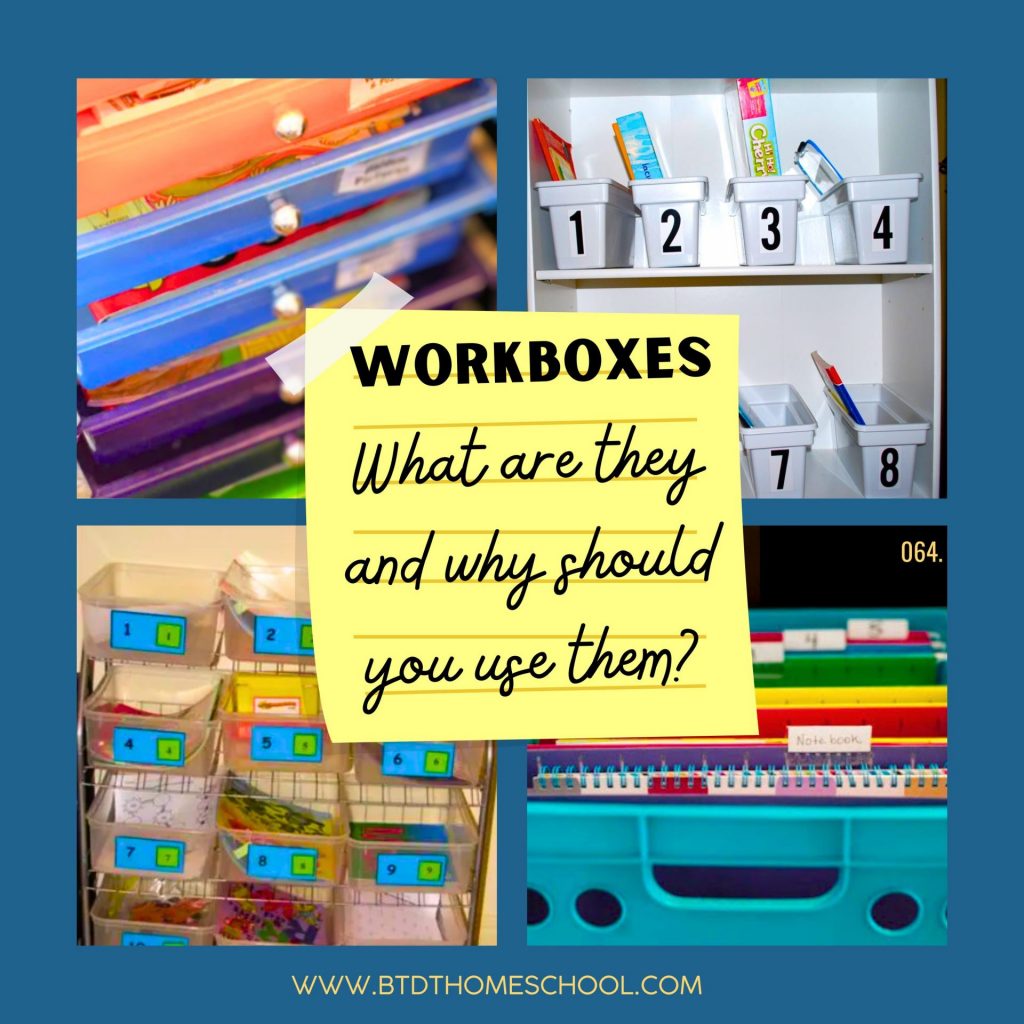065. History Timelines
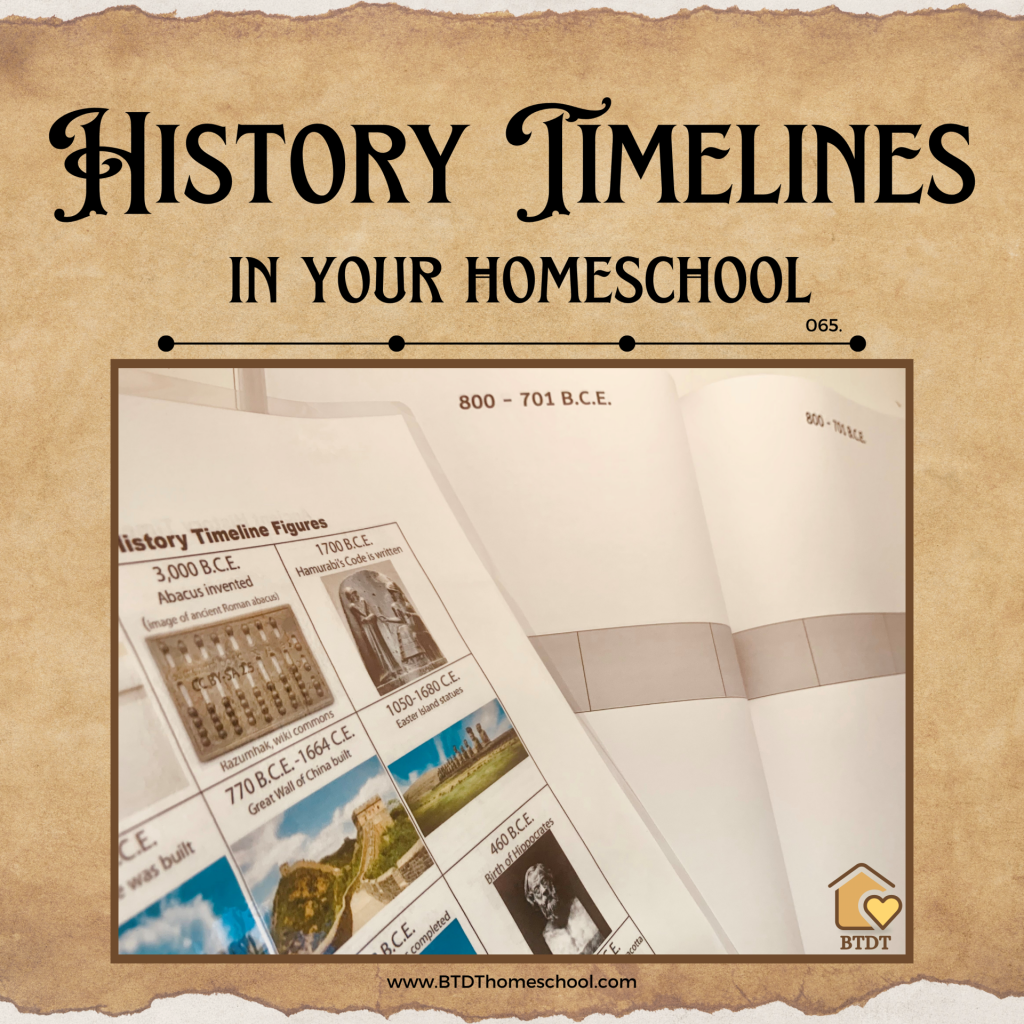
History is a dynamic subject that provides a window into the past, helping us understand the present and shape the future. As homeschoolers, we have the flexibility to explore history in unique and engaging ways, one of which is through creating timelines. When some people think of timelines, they think of a boring list of chronological events, but they can be so much more than that in your homeschool. You can use them as an interactive way to help in comprehension and memory.
In today’s episode, we’re talking about creative methods to make history timelines a fun and enriching part of your homeschool curriculum.
Episode 065:
TWO WAYS TO LISTEN TO THIS EPISODE:
1. Click PLAY Button Above ^^ to listen here.
2. OR Listen on your favorite podcast platform:
Brand New to Homeschooling?
GETTING START PAGE >>
Kindergarten Page >>
High School Series >>
Show Notes
Many homeschoolers, especially those who follow a classical or literature based curriculum use programs that are history-centric and a big part of driving those ideas home is by incorporating a history timeline. So first, let’s define..
What is a history timeline?
A history timeline is a chronological representation of historical events, arranged in sequential order based on their occurrence in time. It serves as a visual tool for organizing and understanding the flow of history, allowing our kids to see the progression of events, developments, and changes over time. History timelines typically include significant dates, events, and sometimes key figures or movements associated with each period. They can cover a wide range of topics, from the Big Bang, to the ancient civilizations to modern times. They may also focus on specific regions, cultures, or themes.
Timelines can be presented in various formats, including paper-based charts, digital platforms, or physical displays. They may incorporate text, illustrations, photos, maps, or other visual elements to provide context and enhance understanding. You can get really creative with this and we sure have! We are going to talk about all of these different types of timelines later, including our Book of Centuries and Timeline figures.
Overall, history timelines are valuable educational resources that help students visualize and comprehend the complexities of the past, and it can really help facilitate a deeper appreciation and analysis of historical events and their significance.
Why should I make a history timeline?
Creating history timelines can offer so many benefits for you child.:
Visual Representation
Timelines provide a visual depiction of historical events, making it easier for students to grasp the sequence of events. It helps them understand their chronology and visualize the connections between different periods or civilizations. This is especially great for those hands-on learners.


Organizational Skills
Constructing timelines requires students to organize information in a coherent and structured manner. They learn to identify significant events, determine their relative importance, and arrange them in chronological order, honing their organizational and analytical skills. Your type A kids really have to be careful! Don’t take up too much space on one part of the timeline when you have a lot of things to add in. You may want to plan this out ahead of time.
Critical Thinking
When making a timeline, it’s important to think carefully about which historical events to include. Students need to think critically about each event, understand how it affected things that happened later, and then decide if it’s important enough to be in the timeline.
Research Skills
Creating timelines involves conducting research to gather information about historical events, dates, and figures. Students learn to locate and evaluate primary and secondary sources, enhancing their research skills and fostering a deeper understanding of historical contexts. We always thought it was interesting that so and so was alive at the same time as this other person. You’ve seen that meme about Cleopatra being closer age wise to you than the pyramids?
Creativity and Expression
Creating timelines allows students to express their grasp of history creatively. They can jazz up their timelines with drawings, quotes, or their own thoughts, boosting creativity and self-expression. It’s a cool way to blend art and history together!
Retention and Recall
The visual and interactive nature of timelines enhances retention and recall of historical information. By actively engaging with the material and visually representing it, students reinforce their learning and develop stronger memory retention of key concepts and events.
This also really helps when playing my favorite game- Timeline!

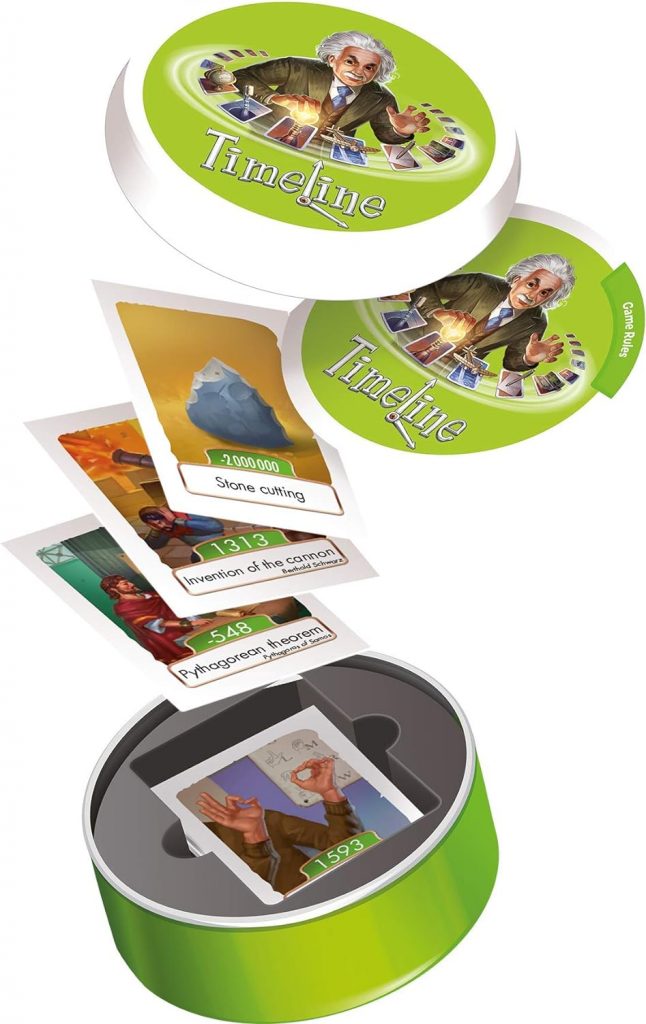
Multidisciplinary Learning
When students work on history timelines, they’re actually engaging with a whole range of subjects beyond just history. They’re doing language arts as they write about historical events. They are exploring art through the design and presentation of their timelines. They are incorporating technology to research and create visually appealing displays. And they are even connecting with social studies to understand the broader context of the events they’re studying. This multidisciplinary approach not only enriches their understanding of history but also helps them develop skills that they can apply across different subjects and even in real-world situations.
We recently did an episode on unit studies. Timelines are a great project to do in conjunction with one:

Collaboration and Communication
You can do this as a group project. When your kids collaborate on timeline projects, they develop essential teamwork and communication skills by working together to research, plan, and create timelines. This cooperative effort fosters their ability to work effectively in groups. Additionally, you can do this with a group of friends or at a homeschool co-op.
Ownership of Learning
When children make a timeline, it helps them to take charge of their learning. They get more interested and involved. It also makes them feel pride when they see their timelines show what they’ve learned about history.
How do I make a timeline?
As we said earlier, there are so many creative Ways to Make Timelines. There really is no right or wrong way. And you can even change up as you go. In one of my houses, I created a border around the top of our room with timeline figures, then later when we moved, we stuck them in a book.
Traditional Paper Timelines
The most common method of creating timelines is using pen and paper. This classic approach will allow your children to practice organization and handwriting skills while gaining a visual understanding of historical events. You can use a long strip of paper or multiple sheets taped together to create a linear timeline. Encourage your child to add illustrations, important dates, and brief descriptions to make the timeline more engaging.
Timeline Walls or Murals
Some homeschoolers transform a wall in their homeschooling space into a timeline mural. I had a friend that used their entire garage – all four walls for their timeline. I used the hallway in my house that leads to the bedrooms and divided it by era. I’m going to put detailed pictures on the website so you can check that out. We put everything on that timeline. Even our dog’s birthday! You can use butcher paper or if you don’t want to devote an entire wall, you can use a large tri-fold poster board. As you study different periods or civilizations, add visual representations directly onto the timeline wall using markers, stickers, or cut-outs.
I created a timeline figure bundle with 31 pages that includes 372 cut outs. Everything is there through recorded human history from Early Nomads to Modern times. This immersive approach turns your learning environment into a living history exhibit.
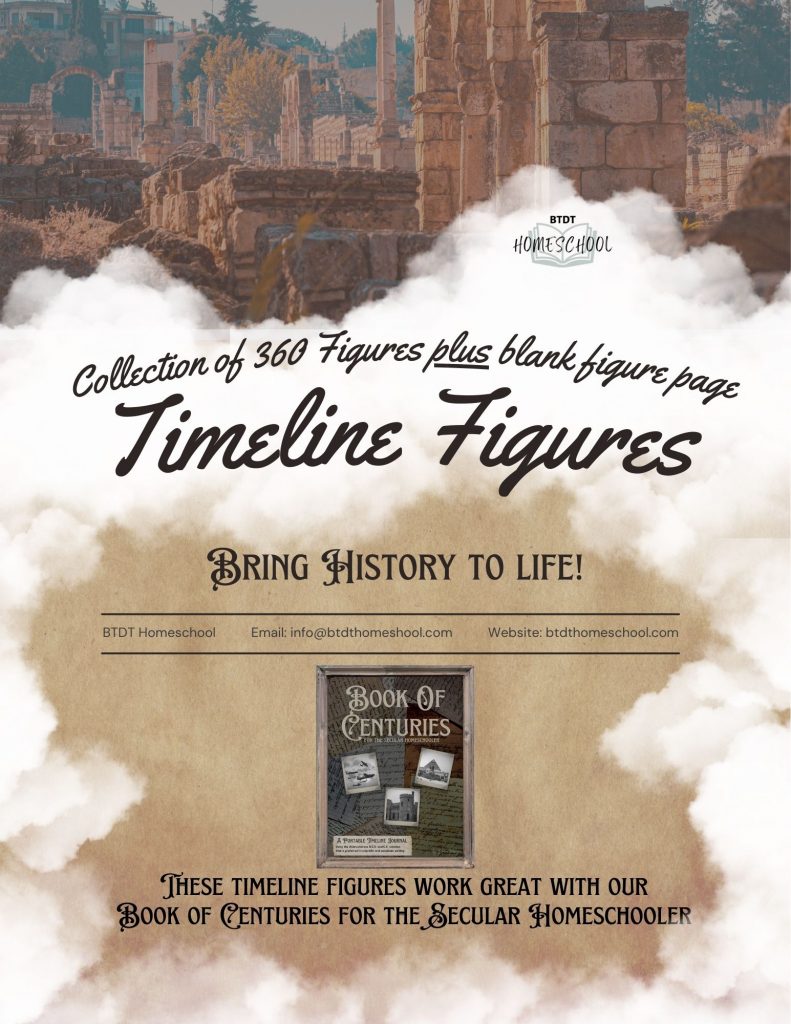
Check them out!
Interactive Digital Timelines
In today’s digital age, there are numerous online tools available for creating interactive timelines. Websites like Tiki-Toki, TimelineJS, or Canva offer user-friendly interfaces where students can input historical data, images, and videos to create dynamic timelines. Digital timelines allow for easy editing and sharing, making them ideal for collaborative projects or presentations.
Timeline Books or Journals
For a more personalized and hands-on approach, you may want to consider doing a timeline book. Like Nicole mentioned earlier, she had each one of her children contribute to one book. If your kids get real creative, they may want their own book. Our secular Book of Centuries uses scientific notation rather than religious notation (AD/BC). This notation is preferred in scientific and academic writing. As a secular homeschooler, I was always frustrated with the religious notation, which is what inspired me to create it and it even gives a mini lesson on the different notations and what they mean. Each two-page spread in the book is devoted to one hundred years —a century— of history from 4000 B.C.E. to 2099 C.E.
You could even use a blank notebook or a sketchbook, your kids can design their own timeline pages, you could use timeline figures, they can incorporate drawings, quotes, and personal reflections alongside historical events. Whether you use the book of centuries, or a blank journal, they both are a great hands-on activity and gives a tangible record and keepsake!
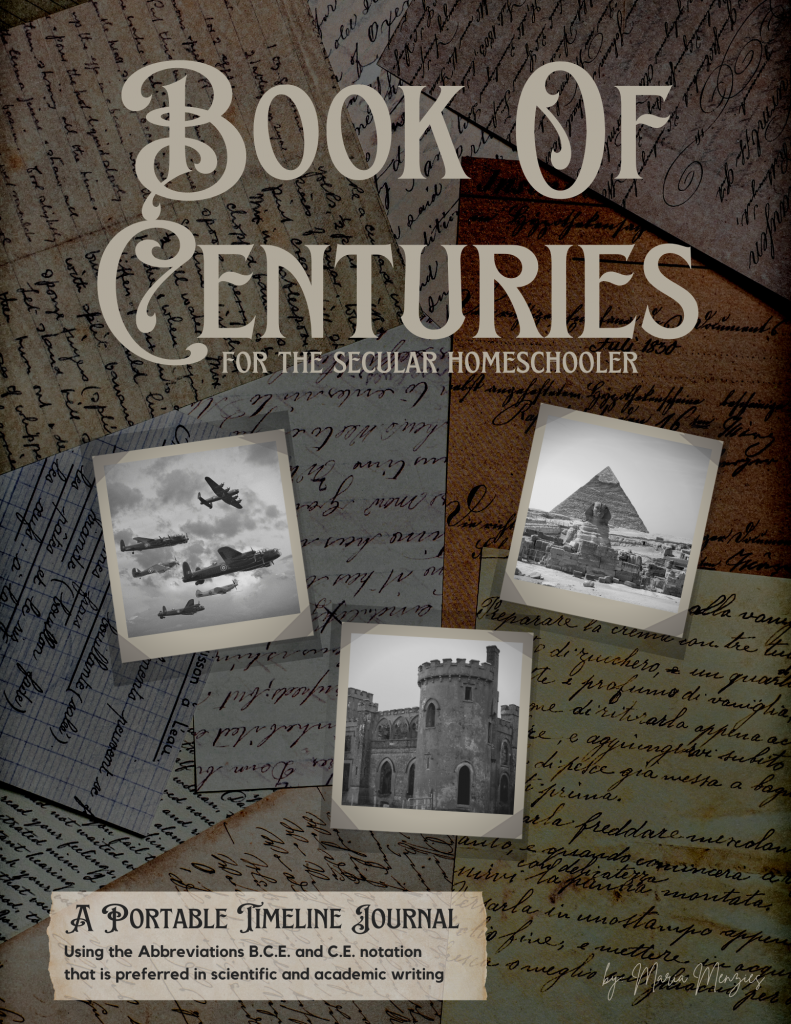
Multimedia Timelines
Enhance traditional timelines with multimedia elements such as audio recordings, podcasts, or QR codes. Students can research primary sources, interviews, or speeches related to specific historical events and embed them within the timeline. This multimedia approach not only provides deeper insights into historical contexts but also caters to different learning styles and preferences. Usborne Books and Magic Tree House Books often use internet links.
Thematic Timelines
Rather than focusing solely on chronological order, explore history through thematic timelines. Choose a particular theme or topic, such as women’s rights, inventions, or wars, and create a timeline highlighting key events and figures within that theme. Thematic timelines offer a more nuanced understanding of historical connections and developments.
History timelines serve as invaluable tools for homeschoolers, helping students organize information, identify patterns, and develop a deeper appreciation for the past. By exploring different methods of creating timelines, we can make history come alive in our homeschool curriculum. Whether you use a wall timeline, the book of centuries, interactive digital platforms, or thematic projects, the possibilities are endless. By infusing creativity and enthusiasm into your homeschool approach, you can cultivate a love for learning that will inspire and empower your children for years to come. So, get ready, grab your markers, and let’s go on a journey through time!
Don’t want to make your own? Check out the cool timelines from Parthenon Graphics!







